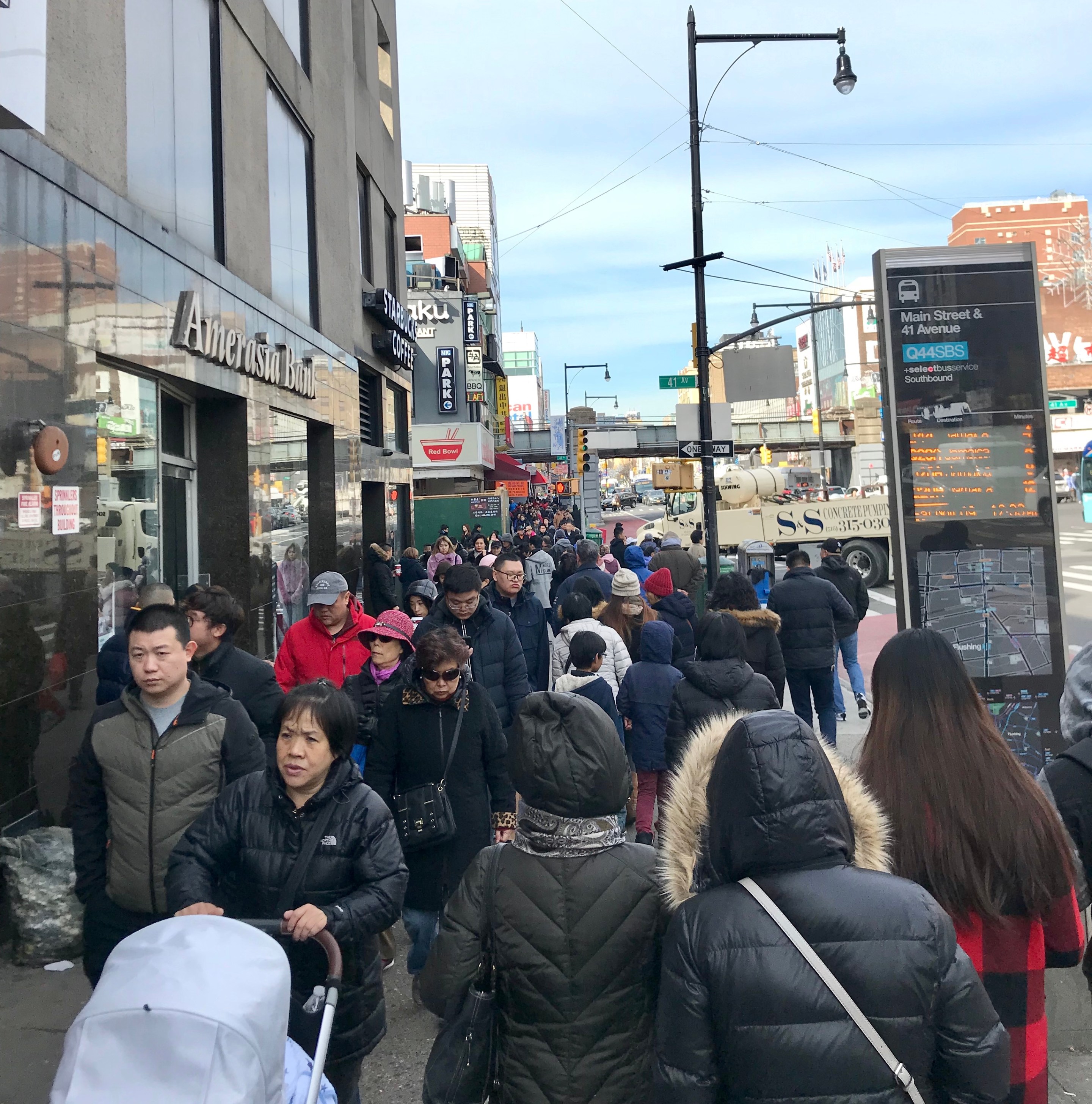
Congestion in Flushing threatens the neighborhood’s only public space: its streets.
That’s why the City Council must reject the Special Flushing Waterfront District rezoning plan when it comes up for a vote this week — it will be a prime driver of future congestion in Flushing. The plan would allow for the construction of 13 new high-rise towers housing 1,725 luxury condos and 879 hotel rooms in an industrial district along Flushing Creek. Developers have paid $1 million to lobbyists to ram the plan through the land-use-review process under cover of the pandemic, which has made it difficult to inform residents about the rezoning.
Council members must vote “no.”
According to the city’s own Vision Zero plan, road congestion makes Flushing the most dangerous place in Queens to be a pedestrian, with an average of 20 pedestrians killed or severely injured every year. The majority of Flushing residents don’t drive, yet the cars on their roads present a danger to residents’ safety and health and degrade the quality of public space. Congestion makes the neighborhood’s extensive bus network, with more than 200,000 daily rides, slow, unreliable, and overcrowded. Delays and lack of loading access also make deliveries to local businesses difficult and costly.
The rezoning will make the congestion much worse.
For one, the plan proposes a private road network and 1,500 new parking spots, which developers claim will “alleviate traffic.” Streetsblog readers may already be yelling about induced demand. Indeed, the SFWD Environmental Assessment Statement paints a dark picture of future gridlock — which the developers have made an enormous effort to obfuscate. They claim that the private roads will improve traffic, and that no further study is needed. Wrong and wrong.

The developers claim that they are creating amenities that will benefit the community. But their proposed (privately managed) “public space” would amount to miniscule additions to a legally required narrow waterfront path. Property owners would be allowed to limit access to this path, which, according to Council Member Antonio Reynoso, will act as a private “back yard” that will not be inviting to the public.
The developers, using some technical trickery, also are seeking to evade other responsibilities to the neighborhood, including accounting for the effect of new residents on already overcrowded Flushing schools, and their obligation to provide any significant affordable housing. They state in their EAS that the development will have no impact on schools or housing because they are comparing the SFWD plan to an alternative plan with fewer amenities, which they say could build "as of right" if they don't get their desired rezoning. The alternative plan also envisions many more parking spaces. Yet many have cast doubt on whether the developers truly could or would even elect to build the alternative "as of right" plan, given the resources they're investing in the proposed rezoning. Such omissions make their environmental review worthless, and are another reason the rezoning must not be approved without an in-depth Environmental Impact Statement.
Meanwhile, the “Immigrant Growth Coalition” that supports the rezoning, including developer groups, Council Member Peter Koo and Community Board 7, opposes policies that would reduce congestion and improve road safety such as the Main Street Busway, open streets, or bike lanes! The Main Street Busway opposition stems from the Downtown Flushing Transit Hub Business Improvement District, a property-owners’ organization, whose board does not represent small businesses, but does feature an SFWD developer, F&T Group, as a board member.
The local business improvement district also did not support any open streets in most crowded pedestrian area in the city outside of Times Square, despite significant local enthusiasm. This coalition also vocally opposes public improvements, including open dining, outdoor retail, real public space at the waterfront, and has not committed meaningfully to public waterfront recreation. Further, it has bought up and developed municipal parking lots that could’ve been used for public space, a park, or a bus terminal.
Local member deference is collapsing
— Bright D Limm 임대중 (he/they) (@bdlimm) December 7, 2020
The rest of 2020 is about putting member deference to rest, once & for all, by defeating the #FlushingRezoning
2021 & 2022 will be about drafting a comprehensive land-use plan that's ambitious, unprecedented, & equitable#NoFlushingRezoning https://t.co/cTTZtUNpxA
The common thread is enforcement of private interests’ intrusion into public space that prioritizes wealthy condo- and car-owning residents and visitors over the largely working class, rent-burdened tenants of Flushing.
It seems as if the developers want to make Flushing as unlivable as possible until they’re seen as the only option for public space improvements, just like they want to make the neighborhood as expensive as possible until they’ve driven out all of the current tenants to make room for luxury development.
Flushing can create high-quality public space on Main Street, truly public space on the waterfront, and across the neighborhood when the city listens to residents’ needs. The inspiring movement that has grown in Flushing around this decade-long rezoning fight can and will ensure that this unique and vibrant neighborhood provides livability and housing security for its residents.
But that can happen only if the Council listens to the voices of the residents of Flushing over those of developers’ interests.
Zeke Luger (@ZekeLuger), a senior majoring in statistics at Queens College, advocates for buses, including as part of the Flushing Main Street Busway campaign.







